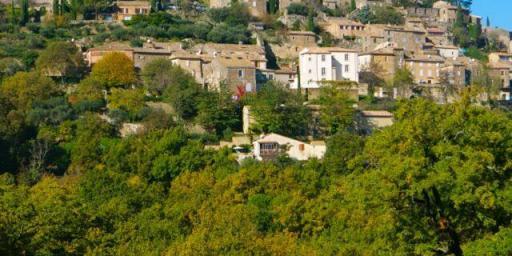Provence: Falling for the Real Luberon
Before we moved to France I had read Peter Mayle’s account of his idyllic year in the Luberon region of Provence, and thoroughly enjoyed it. However, when planning our great escape from the grey-skied rat-race that is the City of London we never contemplated moving to the Luberon. Somehow it all seemed too much of a trodden path. A brief visit to two of the best-known and most-visited villages of the region – Gordes and Roussillon – had confirmed our prejudice. Although we found the countryside of the Luberon to be breathtaking, the eternally blue skies extremely appealing, and the incessant supply of delicious food tempting, we decided it was too touristy for us and had “clearly lost its authenticity”. We were looking for La France profonde and the Luberon simply would not do for us, we announced smugly to anyone suggesting otherwise. We ended up settling in the beautiful Quercy in the southwest of the country, where we were very happy.
Several years later a work opportunity in Aix-en-Provence compelled me to take a closer look at the nearby Luberon, and I quickly realized just how limited our preconceived ideas about the area had been. Living in Aix has given me the opportunity to truly get to know the medieval villages and hamlets, hills and valleys, permanent and temporary residents of what is now my favourite corner of France. Just as Elizabeth Bennet overcame her prejudice and slowly discovered the real Mr. Darcy I fell in love with this stunning region.
What is the Luberon?
There’s much confusion about what actually constitutes the “Luberon.” For many it’s the “golden triangle” formed by Gordes, Bonnieux and Ménerbes; that was, after all, the area originally discovered in the 1960s by Parisians looking for the unspoilt countryside, a superb climate and obligingly rustic locals. But the term “Luberon” also refers to the 300 square kilometre Massif du Luberon composed from west to east of three “mountains” – le Petit Luberon, le Grand Luberon and the much smaller Luberon oriental.
If that’s not enough, there is also the Parc Naturel Regional du Luberon, a much broader region that started small in 1977 and now includes 85 villages from Cavaillon in the west to Manosque in the east, from the Durance river in the south to the Monts de Vaucluse in the north. In 1997 UNESCO awarded the area “biosphere reserve” status to help safeguard the Luberon’s cultural heritage – which dates back to prehistoric times – and maintain its agricultural activities and diverse fauna and flora.
This part of France has more than its fair share of heritage to protect. In addition to its unique ecosystem and stunning landscape, the region is rich in classified monuments, ancient towns and villages, medieval farmhouses, manor houses, churches and fountains. The Luberon was drained of much of its population during the early 20th Century, but ironically this served to protect much of the region’s characteristic charm. When it was “rediscovered”, the area’s proximity to Aix, Avignon and Marseille made it easily accessible to the many Parisians and foreigners keen to restore crumbling stone farmhouses and village manoirs using traditional techniques and materials.
As a result, and with development restrictions put in place early on, the Luberon’s villages, farmhouses, vineyards and farmers’ markets have survived and enjoyed a renaissance. The bakeries, restaurants and cafes have not closed, nor have they been “spoiled.” They’ve simply acquired the occasional upscale boutique or Michelin star restaurant as a neighbour. Yes, some of the villages get crowded in summer. But if that is the price for the preservation of the unique charm and authentic way of life of this beautiful part of France, then as far as I’m concerned it is a price worth paying.
This article previously appeared as Sophia’s “Life in Provence” column in France Today magazine.




No Comment